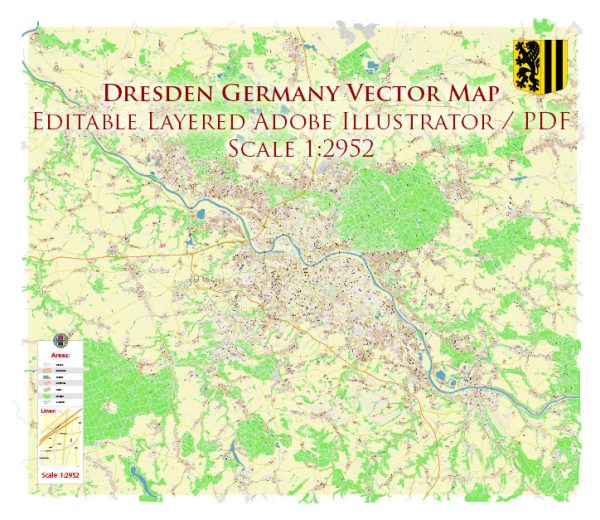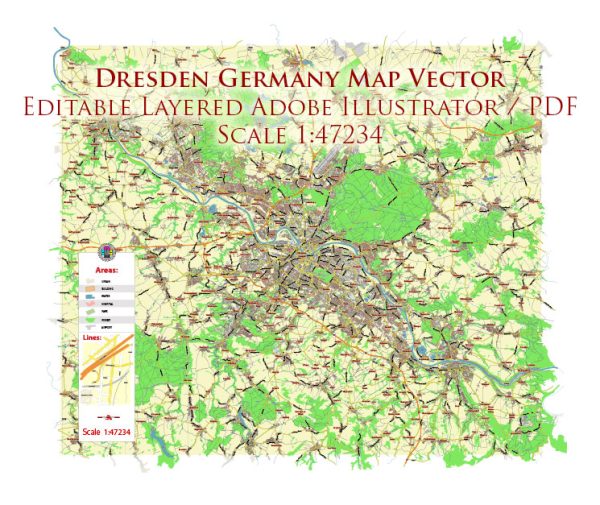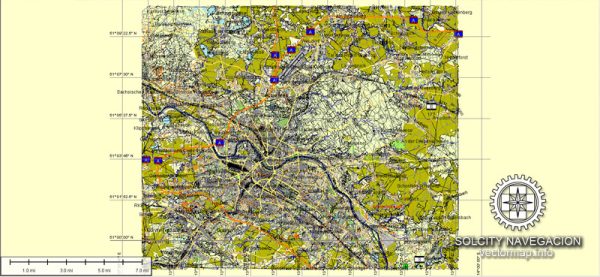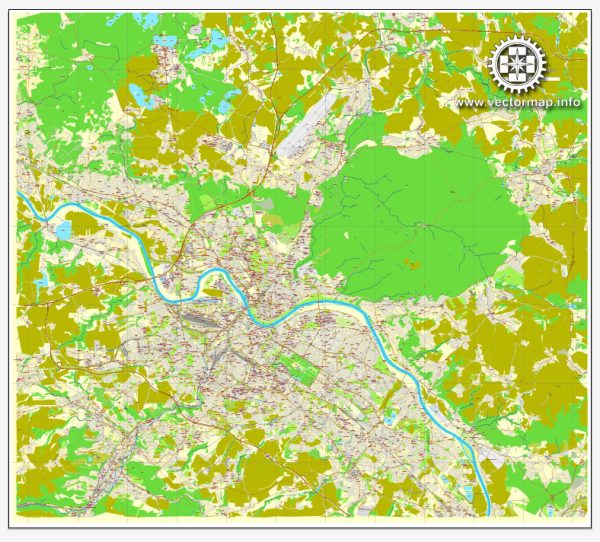Dresden, located in the eastern part of Germany in the state of Saxony, is a city with a rich history and a unique urban development story. Here’s a description of Dresden’s urban development:
- Historical Background: Dresden’s urban development is closely tied to its long and storied history. The city has been inhabited for centuries and has served as the capital of the Electorate and Kingdom of Saxony. It was known for its cultural and artistic significance, and its historic center, the Altstadt, was a hub of architectural beauty.
- Destruction during World War II: One of the most significant events in Dresden’s urban development was the bombing of the city by Allied forces in February 1945 during World War II. This devastating event resulted in the near-complete destruction of the city center, including many historic buildings and landmarks.
- Post-War Reconstruction: Following the war, Dresden underwent extensive reconstruction efforts. The city was rebuilt with a focus on restoring its historical architecture, and much of the historic city center was reconstructed, including iconic structures like the Frauenkirche, the Zwinger, and the Semperoper.
- East German Era: During the era of the German Democratic Republic (East Germany), Dresden was further developed with a mix of Soviet-style urban planning and the reconstruction of historical sites. Many residential and industrial buildings were constructed, often in the functionalist and socialist architectural styles of the time.
- Post-Reunification Development: With German reunification in 1990, Dresden experienced another wave of urban development. The city received significant investment, and many historic buildings were further restored. The urban infrastructure was modernized, and the city’s transportation network was improved.
- Economic and Technological Hub: Dresden has become a thriving economic and technological hub in Germany, with a focus on high-tech industries. The city has a strong presence in fields such as microelectronics, information technology, and biotechnology. This has led to the development of modern research and business parks in and around the city.
- Green Spaces and Cultural Amenities: Dresden has also focused on preserving and enhancing its green spaces. The Elbe River flows through the city, providing recreational opportunities, and there are numerous parks and gardens. The city boasts a vibrant cultural scene, with museums, theaters, and music venues.
- Contemporary Architecture: Alongside the historical reconstruction, modern architecture has also found its place in Dresden’s urban landscape. Notable contemporary buildings include the transparent Volkswagen Transparent Factory and the New Synagogue.
- Sustainable Development: In recent years, Dresden has made efforts to promote sustainable urban development. This includes improving public transportation, increasing energy efficiency, and encouraging eco-friendly initiatives.
- Challenges: Dresden, like many cities, faces challenges in terms of urban development. These include issues related to affordable housing, transportation infrastructure, and balancing the preservation of its historical heritage with the need for modernization.
Dresden’s urban development has been a dynamic process that reflects its historical legacy, periods of destruction and reconstruction, and its current role as a vibrant and growing city with a mix of historical charm and modern amenities.





 Author: Kirill Shrayber, Ph.D.
Author: Kirill Shrayber, Ph.D.